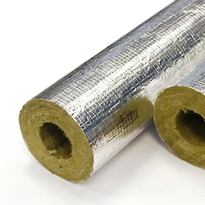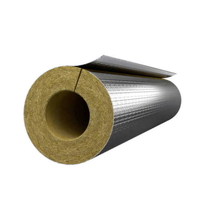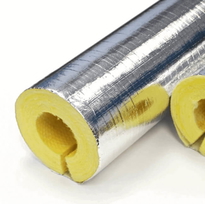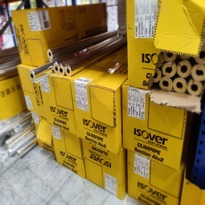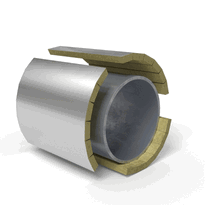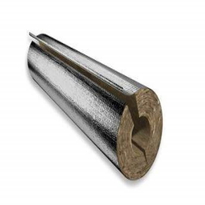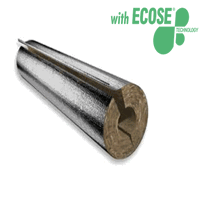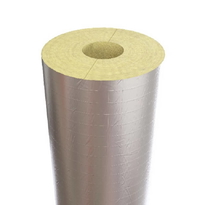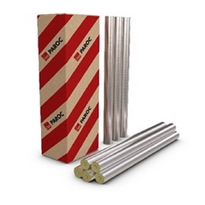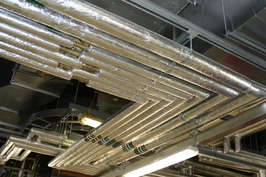Flue Pipe Insulation
Flue pipe insulation involves choosing suitable materials such as fiberglass, mineral wool, vermiculite, foam glass, or sustainable options like hemp-based insulants, all designed to withstand high temperatures and prevent heat loss. Proper installation requires thorough preparation, secure fixing, and sealing joints with high-temperature sealants, in accordance with safety regulations and clearance guidelines. Effective insulation enhances system efficiency, reduces condensation and corrosion, and improves safety. Ensuring compliance with relevant standards contributes to the longevity of the installation. Further guidance will clarify how to optimize insulation for different types of systems.
Materials for Flue Pipe Insulation
Selecting appropriate materials for flue pipe insulation requires careful consideration of several factors, including thermal performance, moisture resistance, acoustic properties, and suitability for high-temperature environments. Proper material selection ensures efficiency and safety in flue systems. Fiberglass is widely used because it effectively reduces heat loss and dampens noise within pipes, making it a practical choice for residential and commercial applications. Mineral wool and rockwool are suitable for industrial settings, as they can withstand extreme temperatures and resist heat deterioration. Vermiculite offers insulation that maintains high-temperature stability, ensuring reliable performance in demanding environments. Foam glass provides excellent moisture resistance and thermal stability, which are critical in outdoor or moisture-prone situations. These materials are selected based on their ability to prevent heat transfer, withstand environmental conditions, and meet safety standards, thus ensuring the flue system operates efficiently and safely over time. Additionally, hemp-based insulation presents a sustainable alternative, leveraging its exceptional thermal properties and low environmental impact while supporting circular economy principles.
Installation Techniques and Best Practices
Effective installation of flue pipe insulation necessitates adherence to specific techniques and best practices to ensure safety, efficiency, and the longevity of the system. Proper preparation is crucial; this involves inspecting the chimney for any blockages, removing debris, and accurately measuring dimensions to select appropriate materials. Benefits of Chimney Liner Insulation Properly installed insulation enhances overall system performance and safety. Secure the liner firmly at both ends using suitable fixing methods such as top plates, and ensure that joints are properly sealed. Employ high-temperature sealants or specialized sealing kits designed for chimneys to prevent leaks and improve safety. When wrapping the liner, apply the insulation evenly to maintain consistent heat retention and minimize the risk of gaps that could compromise the system’s integrity. In cases where space is limited, vermiculite can be used judiciously. Carefully pour the vermiculite around the liner, ensuring its distribution is uniform to provide effective insulation. Always maintain a minimum clearance of 50 millimeters from any combustible materials, in accordance with UK building regulations and safety standards. Use fire-resistant, high-temperature materials for all sealing and protective measures. Installing shields or framing partitions can help safeguard surrounding structures. Ensure all seams and joints are thoroughly sealed to create an airtight and safe insulation system. Regular inspections are also vital for proper maintenance and to sustain the system’s performance and safety over time.
Advantages of Proper Insulation
Proper insulation of flue pipes offers numerous tangible benefits that directly enhance the safety, efficiency, and durability of heating systems. By maintaining higher temperatures within the flue, insulation improves draft, ensuring gases flow smoothly and combustion is more complete. This results in cleaner and more efficient operation, reducing fuel consumption and emissions. Material choices like fiberglass or mineral wool can resist high temperatures and provide effective insulation. In addition, insulation helps minimize smoke spillage and decreases moisture condensation inside the chimney or flue, which lowers the risk of corrosion and enhances safety. Preventing condensation also safeguards the structural integrity of the flue and surrounding components. Insulating flue pipes also helps prevent the formation of creosote deposits, significantly reducing the fire hazards associated with chimney fires. Additionally, using the right insulation materials can further improve the overall performance and longevity of the system. Furthermore, proper insulation extends the lifespan of flue components by reducing temperature fluctuations and structural wear, leading to lower maintenance requirements and associated costs over time.
Common Challenges and Solutions
Common Challenges and Solutions in Insulating Flue Pipes
One of the most frequent obstacles encountered when insulating flue pipes relates to accessibility and installation, particularly in situations where the flue passes through hard-to-reach areas such as rooftops or confined spaces. Overcoming these challenges requires careful planning and execution, ensuring safety and effectiveness. Proper planning and adherence to safety protocols are essential to prevent accidents and ensure that insulation is correctly installed. Additionally, selecting appropriate insulation materials that can withstand high temperatures and environmental exposure helps maintain performance over time.
Key Strategies Include:
Engaging professional installers who possess specialized skills and equipment to navigate narrow, elevated, or awkward locations safely and efficiently.
Selecting durable, heat-resistant materials such as stainless steel liners, which provide long-lasting insulation even in challenging environments.
Conducting regular inspections to identify damage caused by external elements or wear and tear, allowing for timely repairs that help prevent safety hazards.
Applying proper insulation techniques by sealing joints effectively and using high-quality insulating materials to reduce heat loss and prevent condensation.
Implementing these strategies ensures that flue pipe insulation is safe, efficient, and compliant with relevant standards, thereby optimizing system performance and maintaining safety standards across domestic and commercial settings.
Regulatory Standards and Compliance
Regulatory standards and compliance requirements are essential in ensuring that flue pipe insulation in the UK is safe, effective, and aligns with legal and industry expectations. Insulation materials must comply with certification standards set by relevant authorities to prevent the use of harmful substances, such as formaldehyde-based foams. Compliance with these standards ensures that materials have undergone rigorous testing for safety and performance. Building regulations, including the UK Building Regulations Part L and pertinent energy efficiency standards, specify minimum insulation thicknesses and thermal performance metrics, often expressed through K-Values and U-Values, particularly for pipes of specific sizes. Proper installation is critical; it must involve fire-rated materials, adequate clearance from combustible materials, and ongoing inspections to maintain safety. Ensuring adherence to recognised standards, such as the Quality Insulation Installation (QII) standards, helps safeguard the integrity of the insulation. Adherence to installation practices is vital for optimal performance and safety. Compliance not only promotes safety but also enhances energy efficiency and ensures adherence to the relevant legal mandates in the UK.
Conclusion
Proper flue pipe insulation enhances safety, improves energy efficiency, and prolongs the lifespan of the system. Choosing suitable materials, following correct installation procedures, and complying with regulatory standards ensure optimal performance and minimise risks such as heat loss or corrosion. Addressing common challenges with durable solutions is vital for maintaining operational integrity. Overall, a comprehensive understanding and precise application of insulation practices are essential for effective, compliant, and safe flue pipe management.
